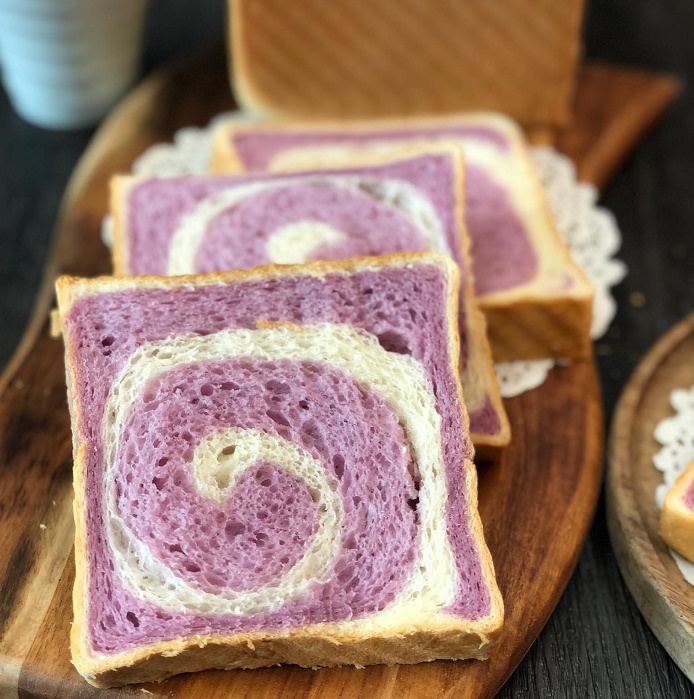
Purple Potato Bread
By Chuah Chiew See
Adding potato yields a light and tender crumb as starch in the spud absorbs and retains any liquid in bread dough. It gets its vibrant colour from a purple pigment called anthocyanin with antioxidants four times higher than the Russet potato normally used for roasting. This purple cultivar contains just 70 calories with 15% carbohydrates per spud, making it a healthier option than the Russet.
Enjoy this bread with Salted Fish Vegetable Curry.
Total Time: 4 hours
Difficulty: 3/5
Cost: S$3.00
Yields: 2 loaves
A: Plain Dough
300g bread flour
195ml milk
25g granulated sugar
20g butter, room temperature
½ teaspoon salt
1 teaspoon instant yeast
B: Purple Potato Dough
250g bread flour
150g purple potato, peeled, steamed and mashed
90g milk (adjust accordingly)
20g granulated sugar
15g butter, room temperature
¼ teaspoon salt
1 teaspoon instant yeast
DIRECTIONS:
1. In a food processor fitted with a dough hook, for plain dough, combine A ingredients except butter. Mix until a silky and elastic dough forms, approximately 3-5 minutes.
2. Add butter and continue to knead approximately 10-15 minutes. Do a windowpane test: pinch a small piece of dough – using both your thumbs and index fingers, gently stretch dough in opposite direction.
If you see a thin membrane resembling a windowpane without it breaking or tearing, the gluten is well developed. If not, continue to knead another 3-5 minutes and do another windowpane test.
3. Place plain dough in a greased bowl. Cover with cling wrap. Refrigerate while preparing purple potato dough.
You Might Like To Read
The Next Generation On The Sharing Economy
4. Potato dough: Combine B ingredients except butter in food processor. Mix until a silky and elastic dough forms, approximately 3-5 minutes.
5. Add butter. Continue to knead approximately 10-15 minutes. Similarly, do a windowpane test. See step 2.
6. Place dough in a greased bowl. Cover with cling wrap – this will be the first proof at room temperature (28-30C) for approximately 1 hour.
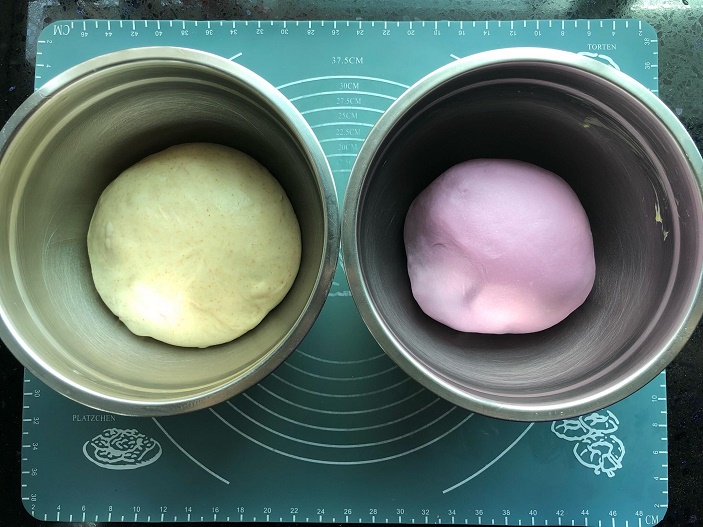
7. Meanwhile, transfer plain dough from fridge to kitchen counter top for first proof at room temperature (28-30C) for approximately 1 hour.
8. When both balls of dough have risen to double its size, do finger indent test (see technique), tip out dough separately on a lightly floured kitchen top.

9. Divide plain dough into 2 equal sizes. Do the same for purple dough. Roll each piece of dough into a ball. Let them rest for 10-15 minutes.
10. Roll out plain dough into 2 separate rectangles. Do the same for purple dough. Lay purple dough on top of plain dough – this is the 1st loaf.
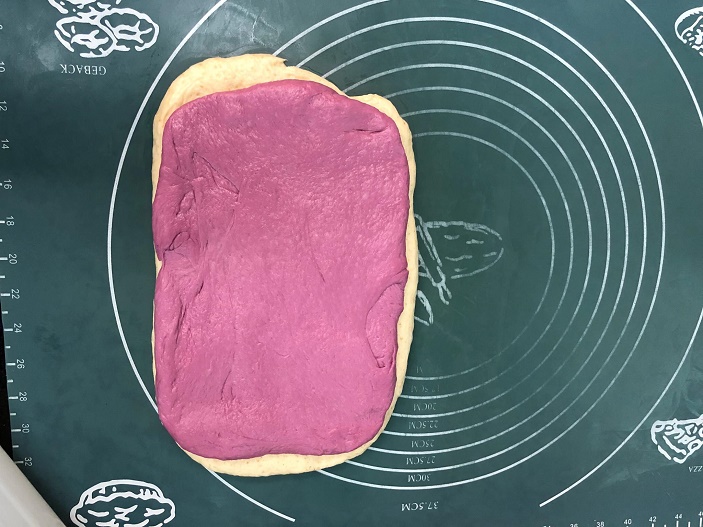
Repeat steps for 2nd loaf.
11. Next, roll each loaf into a log, to resemble a Swiss roll. Place each roll into a loaf pan (20cm x 10cm x 10cm) greased with butter. There will be 2 loaves.
12. Cover both pans with a kitchen towel. Leave it for second proof until dough has filled up 90% of pan space.
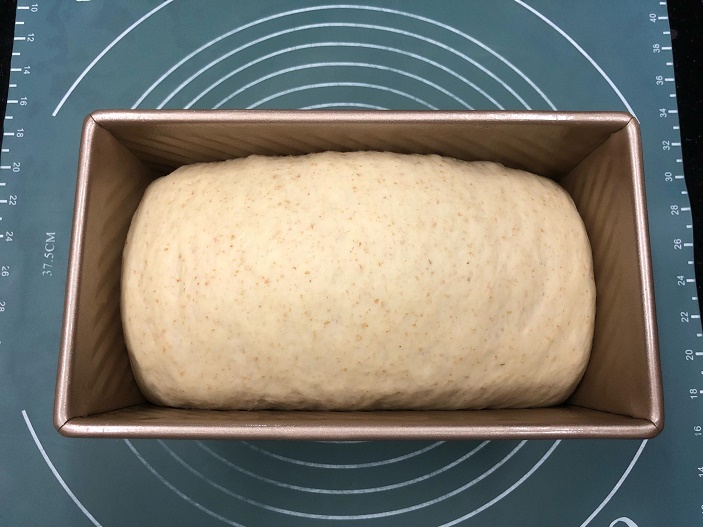
Meanwhile, while bread is proofing, preheat oven to 175C for 20 minutes.
12. Bake 40 minutes or until bread is cooked. Allow loaves to cool down before slicing.
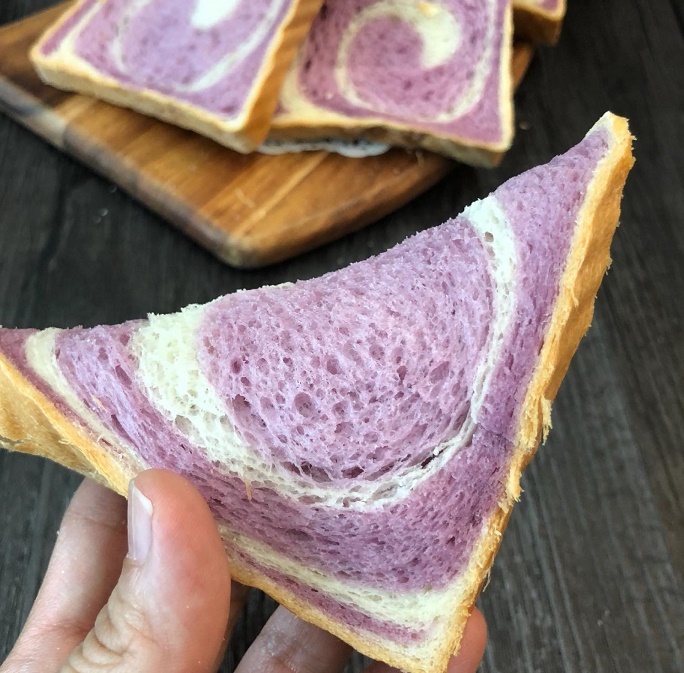
PHOTOS: Chuah Chiew See
TIP: Chill ingredients including mixing bowl – this ensures dough temperature remains cool at the end of mixing.
TECHNIQUE: Finger indent test – flour your finger. Poke into dough, about 1-2cm deep. If dough springs back immediately and leaves no indentation, it is not sufficiently proofed. Continue proofing, then check again. However, when your finger leaves an indentation, dough is ready.
NOTE: Baking temperature and time may vary according to baking pan used. As different ovens work differently, adjust time accordingly. If you have a food thermometer, internal temperature of cooked bread is 92C (approximately 40 minutes of baking at 175C-180C).
Click on www.storm.sg/food for more recipes and reviews of restaurants.
If you have a simple recipe you would like to share, do email it to whipitup@storm.sg





















